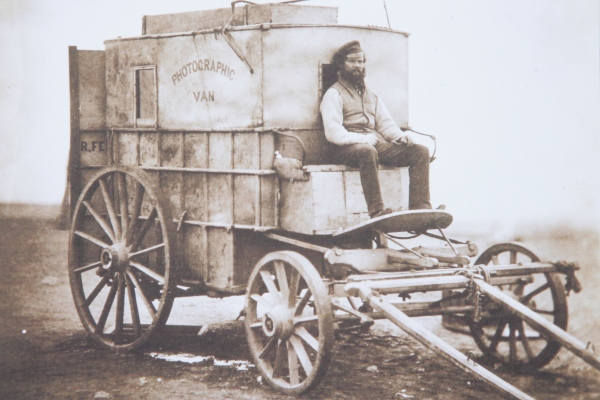History + Inspiration
Hello and welcome to the very first post for the Tin Gypsy project! I thought that I would start at the beginning, with the inspiration for this project…
The concept for this project was inspired by the earliest practitioners of photography, who were as much scientists and inventors as they were artists. They used creativity and lots of trial and error to devise ingenious techniques for making photographs.
What really draws me to the practice of early photographic methods, like Wet Plate Collodion (http://en.wikipedia.org/wiki/Collodion_process)
and Albumen Printing (http://en.wikipedia.org/wiki/Albumen_print), is the process. It’s a slower, more intimate and handmade experience than modern photographic practices. There is a feeling of mystery and magic and a little bit of danger… mixing chemicals, coating plates, watching the images slowly appear on the metal or glass as the developer works- it’s all really amazing to me.
One of these early techniques, the Wet Plate Collodion Process (invented in 1854) must be completed within just a few minutes, before the light-sensitive collodion solution dries on the metal or glass plate and renders the image impossible to develop. In order to successfully execute this process, the photographer must have his or her darkroom nearby. In the 19th Century, some photographers wanted to take the wet plate process outside of the studio and into the field, so horse-drawn carts and buggies were retrofitted as mobile darkrooms.
Traveling portrait photographers were able to wander the country (and beyond!) with their mobile darkrooms, making photographs of people in the small towns and cities they traveled through. These portrait photographers produced small ‘cartes de visite’ and cabinet cards that were very affordable and wildly popular for a time. Traveling darkrooms were also used by documentary photographers who wanted to travel onto the battlefield to photograph the soldiers and scenes of the Civil War.
It’s been an amazing experience for me to connect with the historical beginnings of photography through the study and practice of these antique photographic techniques. I love the distinctive appearance of the tintypes, ambrotypes, salt prints and albumen prints and each unique process of creating them. Each time I make a new plate or coat another sheet of paper to make a print, I know that the resulting image will be absolutely one-of-a-kind and handmade. And that’s totally awesome.

It is truly very inspiring!!!
I would love to have you at my wedding too, as a surprise to my partner who should have been born in 1840. Our wedding will be in the portland area. Thanks for the beautiful work you do in the world!